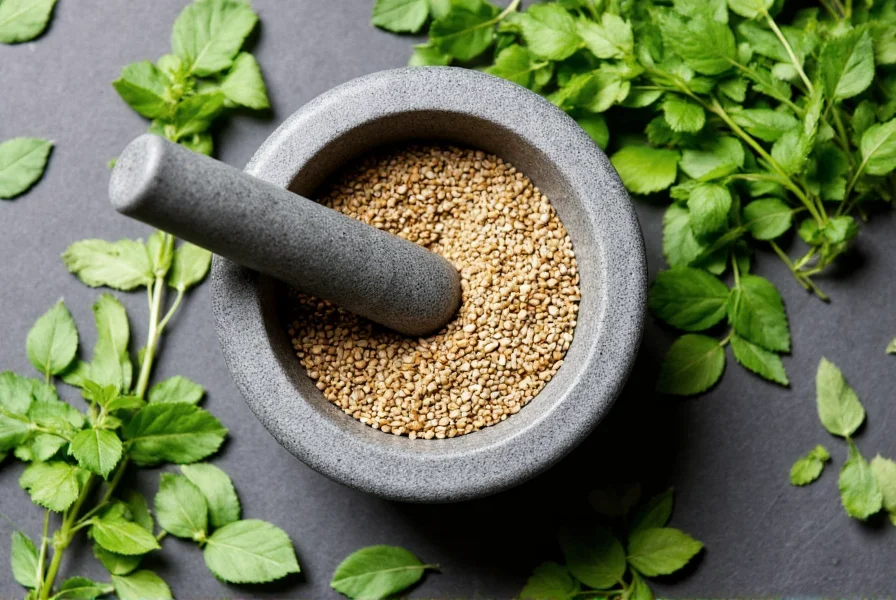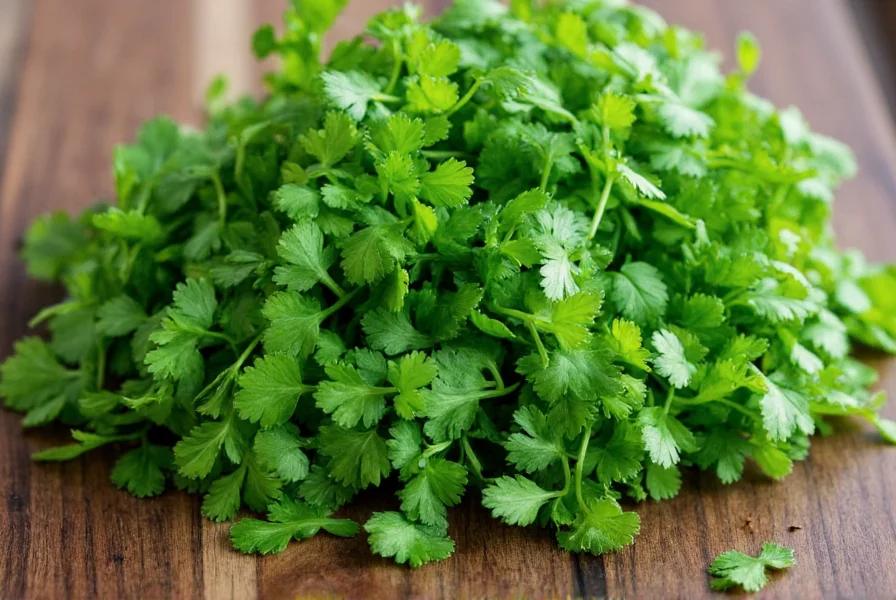Coriander (Coriandrum sativum) serves dual culinary and medicinal purposes worldwide. The fresh leaves, commonly called cilantro in the Americas, add bright, citrusy flavor to salsas, curries, and salads. Coriander seeds function as a warm, nutty spice in curry blends, pickling recipes, and baked goods. Traditional medicine systems utilize both parts for digestive support, blood sugar regulation, and antioxidant benefits, with modern research confirming many of these applications.
Understanding what coriander is used for requires examining both its fresh and dried forms. This versatile herb belongs to the Apiaceae family and offers distinct culinary properties depending on whether you're using the leaves or seeds. Unlike many herbs that lose potency when dried, coriander provides two completely different flavor profiles from the same plant—one fresh and citrusy, the other warm and earthy.
Culinary Applications of Fresh Coriander Leaves
Fresh coriander leaves, known as cilantro in North America, deliver a bright, citrus-forward flavor that enhances numerous global cuisines. Professional chefs and home cooks alike rely on this herb for specific applications where its unique taste profile shines.
When exploring what coriander is used for in fresh form, consider these primary culinary applications:
| Cuisine Type | Common Dishes | Usage Technique |
|---|---|---|
| Mexican | Salsas, guacamole, tacos | Chopped fresh as garnish or mixed into sauces |
| Indian | Chutneys, raita, curries | Blended into sauces or sprinkled on finished dishes |
| Thai | Curries, noodle dishes, salads | Whole leaves as garnish or finely chopped in dressings |
| Middle Eastern | Tabbouleh, fattoush, dips | Mixed with parsley in salads or blended into spreads |
Chefs recommend adding fresh coriander at the end of cooking to preserve its delicate flavor compounds. The leaves contain aldehydes that provide that distinctive citrus note but break down with prolonged heat. For maximum impact in dishes like Thai curries or Indian dals, stir in chopped leaves just before serving.

Coriander Seeds: The Spice Cabinet Essential
While fresh coriander leaves offer one flavor dimension, coriander seeds provide a completely different culinary experience. These small, round seeds have warm, nutty, and slightly citrusy notes that work exceptionally well in spice blends and slow-cooked dishes.
Professional cooks often toast coriander seeds before grinding to enhance their aromatic compounds. This simple technique unlocks deeper flavors that work particularly well in:
- Curry powders and garam masala blends
- Preserves and pickling solutions
- Meat rubs for lamb, pork, and poultry
- Baked goods like rye bread and spice cakes
- Beer brewing as a flavoring agent
When examining what coriander is used for in seed form, note that it serves as a foundational spice in many global cuisines. In Indian cooking, coriander seed forms the base of most curry blends. Middle Eastern cuisine incorporates it into baharat and za'atar mixes. European bakers use it in rye breads and sauerkraut preparations.
Medicinal and Traditional Uses of Coriander
Beyond the kitchen, coriander has a rich history of medicinal applications across various traditional healing systems. What coriander is used for in traditional medicine provides insight into its potential health benefits.
Ayurvedic practitioners have utilized coriander for centuries to support digestive health. They prepare coriander water by steeping seeds overnight to alleviate bloating and indigestion. Traditional Chinese Medicine incorporates coriander to address fever and stomach discomfort.
Modern research supports several traditional uses of coriander. Studies indicate that coriander may help regulate blood sugar levels, making it potentially beneficial for people with type 2 diabetes. Its antioxidant properties combat oxidative stress, while antimicrobial compounds show effectiveness against certain foodborne pathogens.

Nutritional Profile Comparison
Understanding what coriander is used for nutritionally requires examining both forms. While fresh leaves and dried seeds come from the same plant, their nutritional profiles differ significantly:
| Nutrient | Per 100g Fresh Leaves | Per 100g Seeds |
|---|---|---|
| Vitamin K | 310% DV | 14% DV |
| Vitamin C | 27% DV | 2% DV |
| Dietary Fiber | 2.8g | 51.3g |
| Iron | 16% DV | 67% DV |
| Calcium | 2.7% DV | 7% DV |
Fresh coriander leaves excel as a source of vitamins A and K, while the seeds provide substantial fiber and minerals. Both forms contain beneficial phytochemicals like linalool and terpenes that contribute to their distinctive aromas and potential health benefits.
Practical Tips for Using Coriander
Maximizing what coriander is used for in your kitchen requires proper handling techniques. Here's how to get the most from both forms:
Storing Fresh Coriander
Keep fresh coriander viable longer by treating it like cut flowers. Trim the stems, place in a glass with an inch of water, and cover loosely with a plastic bag. Store in the refrigerator for up to two weeks. Alternatively, chop the leaves and freeze them in ice cube trays with a little water or oil for later use in cooked dishes.
Working with Coriander Seeds
For optimal flavor when exploring what coriander is used for with seeds, toast them lightly in a dry skillet over medium heat until fragrant (about 2-3 minutes). Cool completely before grinding. Store whole seeds in an airtight container away from light for up to a year, while ground coriander maintains peak flavor for only 3-6 months.
Substitution Guidance
If you're wondering what coriander is used for as a substitute, consider these options:
- Fresh leaves: Try flat-leaf parsley with a squeeze of lime for similar texture and citrus notes
- Ground seeds: Cumin provides earthiness, though it lacks the citrus component
- Whole seeds: Caraway offers similar texture but stronger anise notes
Common Questions About Coriander Usage
Many home cooks have questions about maximizing what coriander is used for in their recipes. Understanding regional naming differences helps avoid confusion—what Americans call cilantro (the leaves), the British refer to as coriander, while both groups call the seeds coriander.
Some people experience a soapy taste when consuming fresh coriander due to a genetic variation affecting odor receptors. For these individuals, exploring what coriander is used for might involve focusing on the seed form rather than the fresh leaves.
When incorporating coriander into your diet for potential health benefits, consistency matters more than quantity. Regular consumption of small amounts in cooking provides more benefit than occasional large doses. Both fresh and dried forms offer unique advantages depending on your culinary goals.
What's the difference between cilantro and coriander?
Cilantro refers to the fresh leaves of the Coriandrum sativum plant, while coriander typically refers to the dried seeds. In many countries outside North America, both the leaves and seeds are called coriander, with the leaves sometimes specified as 'fresh coriander'.
Can I use coriander seeds instead of fresh coriander?
While both come from the same plant, they have distinct flavor profiles. Coriander seeds offer warm, nutty notes while fresh coriander provides bright citrus flavor. They're not direct substitutes, but in cooked dishes you can use a small amount of ground coriander (1/4 tsp) to approximate some fresh coriander flavor.
What health benefits does coriander provide?
Research suggests coriander may help regulate blood sugar, reduce inflammation, and provide antioxidant protection. The seeds show potential for digestive support, while fresh leaves offer substantial vitamin K and vitamin A. Both forms contain compounds with antimicrobial properties.
How do I prevent fresh coriander from wilting quickly?
Treat fresh coriander like cut flowers: trim the stems, place in a glass with water, and cover loosely with a plastic bag. Store in the refrigerator for up to two weeks. For longer storage, chop and freeze in ice cube trays with water or oil.
Why does coriander taste like soap to some people?
Approximately 20% of people have a genetic variation that makes them perceive certain aldehydes in fresh coriander as soapy. This is an inherited trait related to odor-receptor genes. Those affected often prefer using coriander seeds, which don't trigger this reaction.











 浙公网安备
33010002000092号
浙公网安备
33010002000092号 浙B2-20120091-4
浙B2-20120091-4